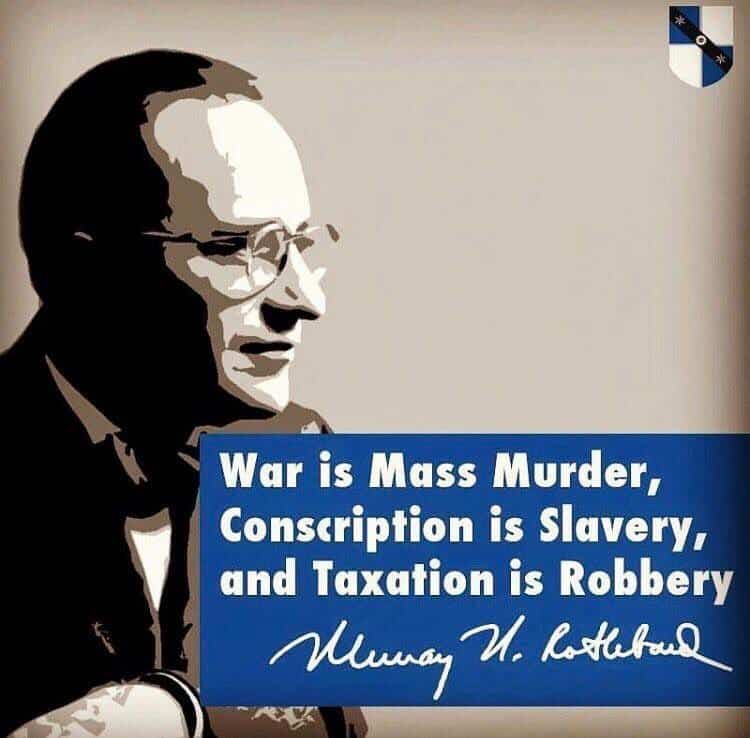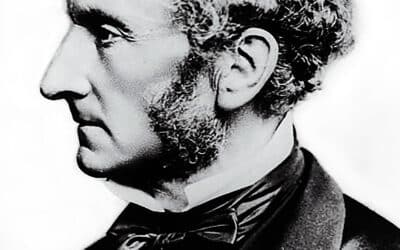The U.S. Senate continues to debate legislation potentially adding women to the military draft in the United States. This week, for instance, Senator Josh Hawley attempted to remove from the 2021 National Defense Authorization Act provisions requiring that “all Americans” (aged 18-25) register for the draft.
We shouldn’t be surprised to find that Washington politicians are nearly all in agreement that at least half of America’s young adults ought to be coerced at de facto gunpoint into military service—presumably to fight for “freedom.” The only debate at hand apparently is whether or not the other half ought to be forced into temporary slavery as well.
Although most Americans now seem to treat potential conscription as just a fact of life, it’s important to note that the idea of a nationwide mass draft as we know is a strictly modern invention. More broadly, conscription is a relic and result of state building-efforts by European regimes of recent centuries when these regimes began to build large standing armies at a size previously unknown in Europe. The movement arose side by side with the spread of strong centralized states and the decline of political decentralization.
This, of course, is clearly at odds with nineteenth-century American notions of a decentralized republic. Moreover, support for federal conscription is completely contrary to any claims one might hear from conservatives or others that they support “limited government” or “states’ rights” or a decentralized federal structure. Rather, whether in Europe or in North America, conscription has always been the tool of regimes seeking to exercise greater direct and untrammeled power over the population.
Conscription and European Despotism
The idea of compulsory military service was certainly not new in the eighteenth and nineteenth centuries, although the older models of conscription were employed in a manner far different from that of modern-day conscription.
One often used example of early “conscription” is the French arrière-ban, a tool used by French kings to raise troops for a variety of military purposes. In the Middle Ages, however, this was by no means a general draft of the kingdom’s young men. After some general use by the Merovingians in the early Middle Ages, the ban became the domain of local lords and monasteries. In the thirteenth century, Philip IV revived its usage, and the king demanded “service owed the king from the feudal tenants of his direct vassals.” But this by no means amounted to a draft of all military-age men.
In effect, “military service fell for the most part to a professional class of knights who served their immediate lords.” Older forms of centralized conscription also took into account the reality that the monarch depended on buy-in from vassals and nobles for the purposes of indirectly raising funds and personnel necessary for war making. In wartime, monarchs often needed money more than they needed men, so military policies allowed for the commutation of compulsory service through the payment of an additional tax. Thus, conscription often became primarily a means of raising royal revenues.
Attempts to impose growing conscription power grew alongside the rise of absolutism in Europe. Efforts were haphazard, however, and some of the most serious attempts at imposing long-term military obligations on the population were tried in Sweden under the absolutist monarch Charles XI. The militarist Prussians, not surprisingly, made similar attempts.
But as noted by historian Kevin Linch, conscription efforts were “inconsistent” and included “numerous exemptions” for many territories within a polity. Decentralized polities like the Habsburg Empire were unwieldy cases where conscription was “difficult to enforce” because “they were patchwork states with multiple jurisdictions.”
Overall, the traditionally decentralized political institutions of Europe, combined with distrust of faraway monarchs, meant that until the late eighteenth century—as described by Guglielmo Ferrero—“even the most despotic governments were unable to apply conscription except in a very rudimentary form, and were obliged to use largely professional armies.”1Guglielmo Ferrero, Peace and War (London: MacMillan and Company, 1933), p. 82.
All that changed with the French Revolution. The absolutist French monarchs of the ancien régime had paved the way for the wholesale centralization of the French state, and this helped enable the revolutionaries—and later, Napoleon—to impose a levée en masse which then led to what Napoleon called a “nation in arms.” It was the militarization of society in a manner not seen before in Europe.
Moreover, conscription was now administered directly by the national regime and not dependent on local vassals, nobles, municipalities, or regional governments. Thus, by the nineteenth century states were able to raise enormous conscription-based armies, allowing for the widespread mobilization of a state’s population on an unprecedented scale—a trend which then culminated in the wars of the twentieth century.
As noted by historians Cathryn Corns and John Hughes-Wilson:
The key to these mass continental armies was compulsory conscription. The revolutionary levees en masse had been converted and formalized by the end of the nineteenth century into social and military policy by both France and Germany…. Even the United States of America, whose whole raison d’être was individual liberty, democracy and freedom, was forced to yield to the impulse to conscription during its bloody struggle to coerce the secessionist southern states between 1861 and 1865.
The American Embrace of Conscription
Corns and Hughes-Wilson are, of course, right to connect conscription to the American Civil War.
It was indeed the Civil War which in America revolutionized military conscription and recruitment, turning it from a limited system of localized militia conscription into a system of national coerced military service. So bent on the conquest of the Southern states was the regime in Washington, that the U.S. embraced national conscription two generations before the United Kingdom’s adoption of the measure in 1916.
Although haphazardly applied, conscription as a concept was not as novel in nineteenth-century America as many later observers have suggested.
As Jeffrey Rogers Hummel has shown, conscription had been used at the militia level during the eighteenth and nineteenth centuries in the U.S.:
The only U.S. war fought without conscripts before the Civil War was the Mexican War. American governments, state or national, drafted men not only to fight the Revolution and the War of 1812, but also to wage Indian wars and to suppress the Whiskey Rebellion. Because they employed decentralized militia drafts, however, this fact has often escaped notice.
The key difference was not so much the use of conscription at all, but the centralization of military powers. As in Europe in earlier decades and centuries, local militias and conscription for ad hoc defensive measures did exist in the United States. Yet right up until the first draft imposed during the Lincoln administration in 1862, military conscription in the U.S/ had been focused around state or local governments. These government entities employed a wide variety of means to meet recruitment goals, through either threats of conscription or through the payment of “bounties,” which were cash benefits for enlistment.
The Militia Act of 1862 was the beginning of the transition to federal authority in raising an army. The act provided for a draft of the militia if a state did not fill its quota of three-year volunteers.
As Hummel mentions, also included was a measure was legislation that “authorized [the president] to administer militia drafts directly.”
But that was only the first step. Perri continues:
The Enrollment Act of 1863 completed the transition to federal control of recruitment and national conscription. Enrollment was similar to draft registration in recent history, except it was conducted as a census: individuals were sought out to be enrolled. Enlistment quotas were assigned to each Congressional district by its pro rata share of the number called by the president, minus the number of previous enlistees from the district. After 50 days, a lottery would be held to obtain the remainder of a district’s quota.
Fortunately, resistance to a national draft was such that Congress was sure to include provisions for commutations—paying a tax to avoid being drafted—and substitutes. The latter allowed draftees to pay other men—often discharged veterans, foreigners, or others exempt from the draft—to serve in place of the drafted. All combined this meant potential draftees had at least a few more options than would otherwise have been the case. And those who did chose to serve as substitutes were able to receive additional compensation for the additional risks they were taking on.
These policies combined led to several outcomes. The first was that the federal draft effort allowed the federal government to shift war costs from the federal government to state and local governments. This occurred because in order to meet recruitment demands from Congress, state and local governments were in many cases forced by public resistance to offer bounties rather than use the draft. In other words, a great many potential draftees became “voluntary” recruits once bounties were raised high enough. This raised the costs to the state and local governments paying the bounties.
Secondly, the threat of a draft does indeed appear to have helped the federal government raise enormous armies that likely would not have been possible otherwise. Perri shows that “[i]n January 1862, there were 575,917 men in the army; one year later there were 918,121; in January 1864, there were 860,737; and, in January 1865, there were 959,460.” Given the size of nineteenth-century America—there were fewer than 23 million Americans in the Northern states according to the 1860 census—these were enormous numbers, especially compared what had come before in American history. The US had now joined the ranks of those despotic European states with “mass continental armies.”
Centralizing Both the Draft and the Militia
The nationalization and centralization of military recruitment and conscription was one of the mortal wounds inflicted on the decentralized federalist structure that ostensibly exists in the United States. Yet, thanks to military reforms such as national conscription, this decentralized structure now exists in name only. As occurred in Europe in earlier centuries, localized control of military resources was eroded and direct federal control was established. Through such efforts, the dreams of absolutist monarchs were being realized on American soil.
The federal government’s seizure of conscription powers also fit hand in glove with an ongoing trend that becomes increasingly obvious toward the end of the nineteenth century: the end of the independent state militia system altogether. While state governments and state governors had enjoyed strong veto powers over deployment of state troops during most of the nineteenth century, these powers waned considerably after the Civil War. These were again greatly weakened with the passage of the Militia Act in 1903, which essentially nationalized the state militias and handed over most funding for state military resources to the central government. Of course, even if state governments enjoyed some continued veto powers over federal use of the “National Guard,” national conscription power enables the federal government to simply seize control of additional personnel directly through the national draft.
By the First World War, this transition to national control was nonetheless complete, and the Wilson administration was able to impose a far more draconian draft than that employed in the Civil War. This time, bounties and substitutions were outlawed and exemptions were significantly scaled back. American men were soon being sent to be slaughtered in the trenches of Europe.
Today, by refusing to abolish the Selective Service and by maintaining de facto direct control over the National Guard, the U.S. government continues to exercise powers of a nature most nineteenth-century Americans would have viewed with astonishment, fear, and contempt. Although Congress may debate whether or not to add women to its compulsory war machine, the real nature and problem of federal power is today steadfastly ignored.
This article was originally featured at the Ludwig von Mises Institute and is republished with permission.







